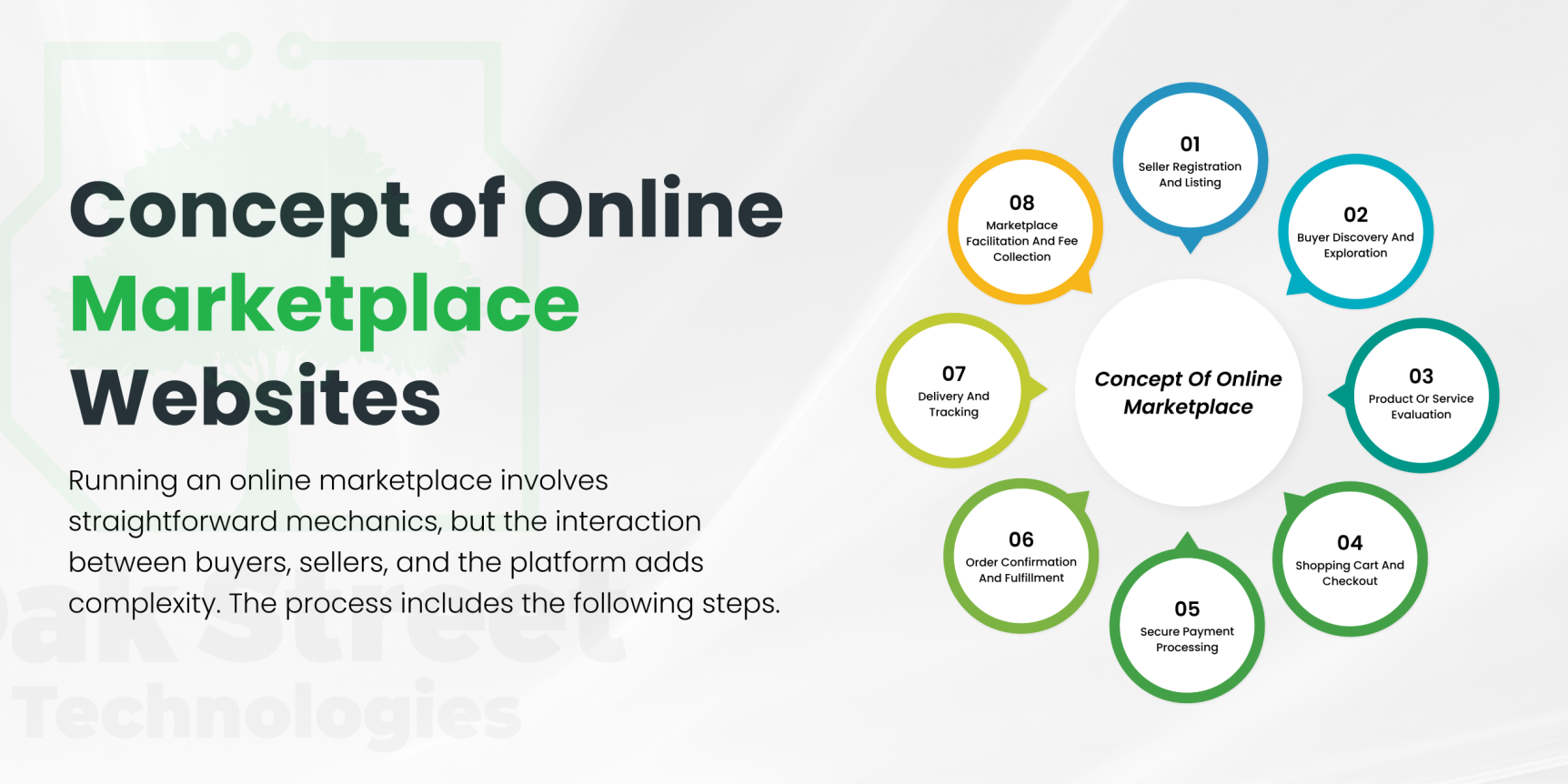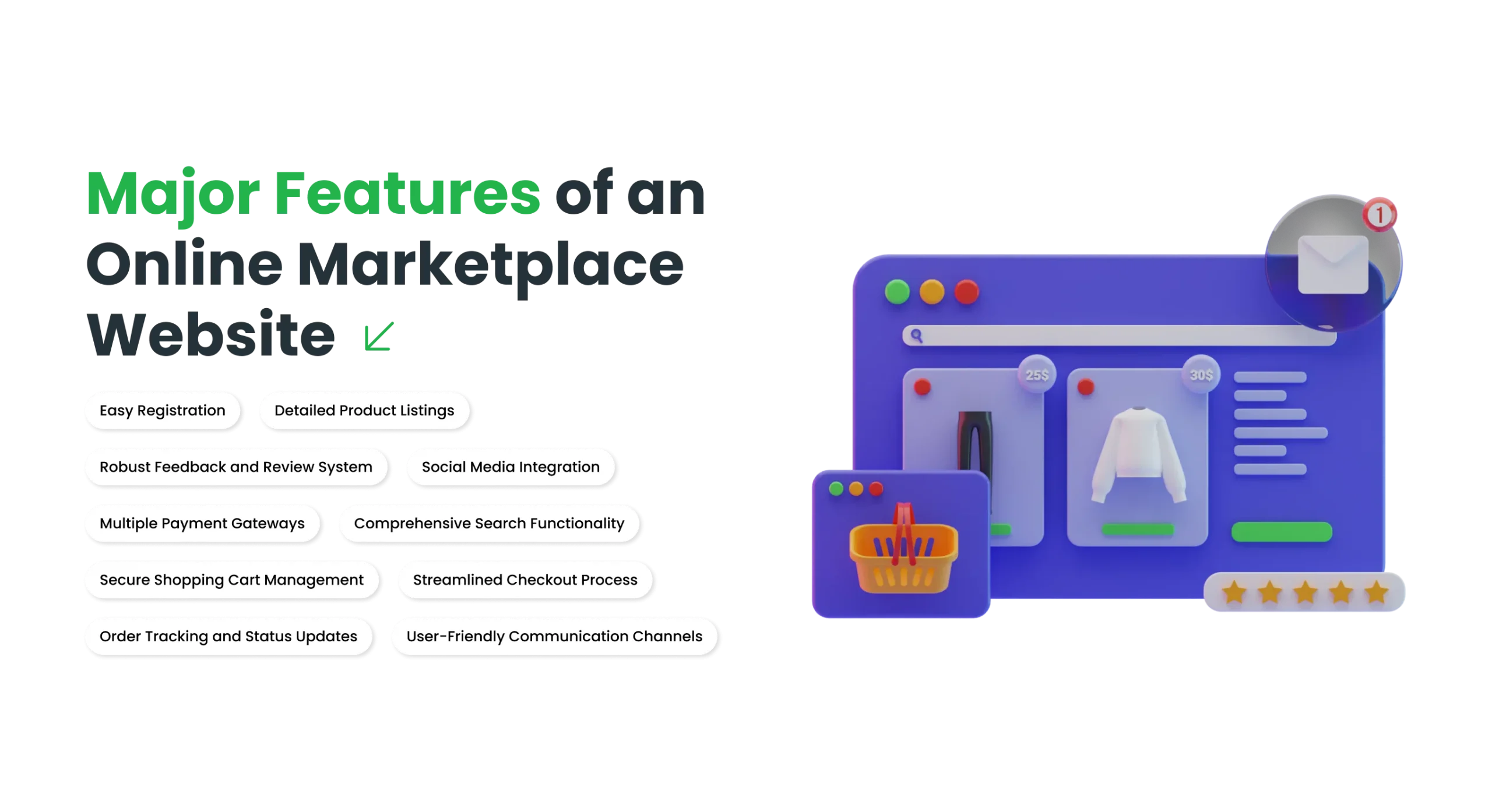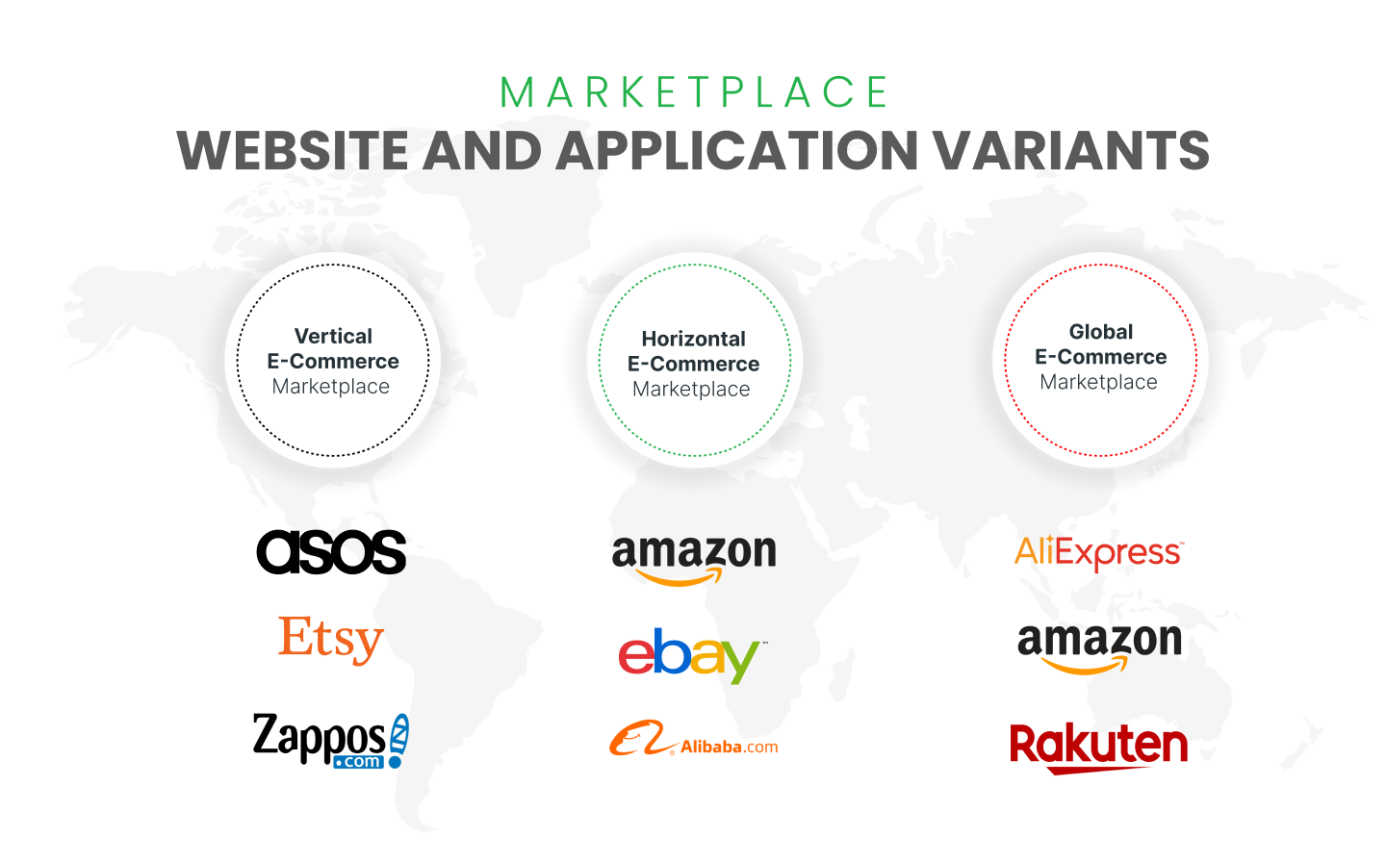In this modern age of technology, the internet is the most preferred medium of dissemination of information and of course of business. Marketing strategies carried out through internet are not only super-fast and can reach a wider audience, but also cost effective as compared to the traditional methods of marketing. That’s why the Online marketplace websites are increasingly becoming almost indispensable for businesses around the world. With the rise of sharing economy globally, people and businesses around the world are encouraged to launch their online website or mobile applications. In this light, it is pertinent to know about the various aspects of it to harness its immense potential to propel your business forward.
If you are also desirous of launching a website or mobile application for your business and do not know as to how to go about it, you may hire a website development services and get your desired website developed as per your peculiar needs. This blog will enlighten you about the various aspects, variation and features of a marketplace website. Let’s dive deep into its very nuances in detail, taking one at a time.
Understanding the Concept of Online Marketplace Solution
In the bustling world of e-commerce, online marketplace solutions have emerged as a highly beneficial boon that seamlessly connect buyers and sellers, facilitating the exchange of goods and services across the digital realm. These virtual marketplaces act as intermediaries and centralized hubs where sellers can conveniently showcase their products or services and buyers can effortlessly browse, compare, and purchase them from anywhere in the world.
The mechanics that drive an online marketplace solution are relatively straightforward, yet the interplay between buyers, sellers, and the marketplace itself is quite a complex rigmarole. The process typically involves the following steps:

I. Seller Registration and Listing
It begins with sellers registering on the marketplace platform. It involves creating a virtual storefront where they can list their products or services, providing detailed descriptions, images, pricing information, and any other relevant details that potential buyers might find useful. It serves as the face or profile of the whole business, descriptive of the very essence of your business.
II. Buyer Discovery and Exploration
Drawn to the marketplace’s vast array of offerings and the handiness of the platform, buyers embark on their exploratory journey. They can use various search functions, filters, and category browsing to navigate through the marketplace and narrow down their options to the products or services that pique their interest, or they are in search for. This facilitates them with an easy one-window shopping facility.
III. Product or Service Evaluation
Once a buyer has identified the desired purchases, they explore deeper into the product or service details – costs, features, etc. They can find related information that can help them make a smooth and contented purchase. This could involve reading reviews, comparing prices, and scrutinizing product specifications to make informed and educated decisions. It lays bare the competitive nature and desirability of the product based on the factors discussed (cost, reviews etc.).
IV. Shopping Cart and Checkout
They the desired item is selected for purchase, buyers proceed to the virtual shopping cart, where they can review their selections, modify quantities, and avail any applicable discounts or coupons. Having made all the necessary purchase-related checks on their part, they proceed to the checkout process, and it finally culminates with payment.
V. Secure Payment Processing
The exploratory journey on the part of buyers comes to an end with the payment. The checkout process requires buyers to enter their payment information, ensuring secure transactions through integrated payment gateways that are convenient and comply with industry standards. Unlike the traditional methods, nowadays, online transactions are super easy and seamless and fast in nature.
VI. Order Confirmation and Fulfillment
The whole purchasing rigmarole culminates with a successful payment, where the buyer receives an order confirmation, and the seller is notified of the purchase. The order is then prepared for fulfillment or placed, which may involve packing, shipping, or providing access to digital goods or services.
VII. Delivery and Tracking
Having the order been placed, buyers can now track their orders through the marketplace platform, receiving updates on shipment status and delivery timelines. Once the order arrives, buyers can confirm receipt and provide their valuable feedback on it.
VIII. Marketplace Facilitation and Fee Collection
Throughout this process, the online marketplace solution is of immense importance because it facilitates a seamless interaction between buyers and sellers and provides the infrastructure for secure transactions. For its services, the marketplace typically charges a commission on each completed sale, generating revenue that fuels its continued operation and development.
The intricacies of an online marketplace solution are not merely limited to mere these core mechanics rather it extends beyond encompassing various functionalities that enhance user experience, streamline business operations, and ensure the smooth flow of goods and services within the digital marketplace.
Major Features of an Online Marketplace Website
At the core of every successful online marketplace lies a robust set of features that facilitate smooth transactions and enhance user experience. These features account for the needs and demands of all buyers and sellers and ensure that each party navigates the platform with ease, convenience, and satisfaction.

I. Easy Registration
It is indubitable that a smooth registration process is paramount to attracting and retaining users. The ideal and recommended practice for marketplace is to provide multiple registration options, including traditional email-based sign-ups and social media logins that allow users to create accounts quickly and conveniently and with much ease.
II. Social Media Integration
Social media integration is a vital aspect that offers a seamless and familiar way for users to connect with the marketplace. The linkage of social media accounts facilitates users to avoid filling out lengthy forms and easily share their marketplace activities with their social networks/audience.
III. Multiple Payment Gateways
To cater to the diverse preferences of users, an online marketplace should offer multiple payment gateways as it helps ensure that buyers can utilize their preferred payment methods, such as credit cards, debit cards, e-wallets, or mobile payment solutions, without any inconveniences and stumbling blocks.
IV. Comprehensive Search Functionality
A powerful search function is highly vital as it empowers buyers to locate the products or services they seek with ease. Not only just that, advanced search capabilities, such as filters, category browsing, and autocomplete suggestions, further refine the search process, leading buyers to their desired items effectively, quickly, and efficiently.
V. Detailed Product Listings
Informative and engaging product listings play a crucial role in converting buyers into purchasers. To this end, listings should include high-quality images, comprehensive descriptions, detailed specifications, and customer reviews, facilitating buyers with all sorts of information they need to make informed decisions.
VI. Secure Shopping Cart Management
The shopping cart is a temporary repository for buyers’ selected items, and it should be easy to manage, allowing buyers to add, remove, and modify items as desired. Remember that advanced features, such as saved carts and wish lists play a key role in enhancing the shopping experience and encourage repeat purchases.
VII. Streamlined Checkout Process
The checkout process should be a smooth transit – a simple and secure one guiding buyers through the payment process with minimal friction. Moreover, it needs emphasis that clear instructions, secure payment gateways, and various payment options ensure a smooth, streamlined, and stress-free checkout experience.
VIII. Order Tracking and Status Updates
Once the purchase has been completed, the buyer should be able to track their order status and receive real-time updates on shipping and delivery timelines. This transparency ensures accountability, instills confidence in the marketplace, and helps in meeting the customer expectations.
IX. User-Friendly Communication Channels
Effective communication has enormous value in web-based affairs, particularly for resolving buyer inquiries and addressing any issues that may arise. The desired and most valued practice is that a marketplace should provide multiple communication channels, such as live chat, email support, and phone support, ensuring that buyers can reach assistance efficiently and in a timely manner.
X. Robust Feedback and Review System
Lastly, a well-implemented and robust feedback and review system enables buyers to share their experiences with products or services. They provide valuable insights for other users and help sellers improve their offerings. This transparency fosters a sense of trust and encourages informed decision-making for the buyers and helps sellers to make up for any shortcomings, if any for better facilitation/improvement.
Marketplace Website and Application Variants
The online marketplace offers a diverse range of platforms catering to various niches, target audiences, and geographical scopes. It is of paramount importance for aspiring entrepreneurs and businesses seeking to venture into the e-commerce domain to understand the very nuances of it. Some of the variations/types in this regard include the following:

I. Vertical E-Commerce Marketplace
When it comes to vertical e-commerce marketplace, it specializes in a particular product category or industry, such as fashion, electronics, or home décor. This focused approach allows for tailor-made product offerings, targeted marketing strategies, and a deeper understanding of customer preferences. It has been observed that vertical marketplaces often attract a loyal customer base due to their exclusive nature – their specialized expertise and curated product selection.
Some of the examples of vertical e-commerce marketplaces include the following:
- ASOS (fashion)
- Etsy (handmade and vintage goods)
- (shoes)
II. Horizontal E-Commerce Marketplace
Contrary to vertical marketplaces, horizontal e-commerce marketplaces offer a wide variety of products from diverse categories that appeal to a broader audience. This comprehensive approach attracts a wider customer base and requires more extensive product management and marketing efforts. Horizontal marketplaces are available because they often serve as one-stop shops for various consumer needs and requirements.
Some of the examples of horizontal e-commerce marketplaces include the following:
- Amazon
- eBay
- Alibaba
III. Global E-Commerce Marketplace
Global e-commerce marketplaces, as the name suggests, extend their reach beyond national borders, and connect buyers and sellers internationally. This ubiquitousness inevitably expands the potential customer base but requires considerations like international shipping, currency exchange, and localization. It, however, needs mentioning that global marketplaces often face regulatory and logistical challenges but present significant growth opportunities and have the potential to yield substantial results.
Some of the examples of global e-commerce marketplaces include the following:
- Amazon (global)
- AliExpress (China)
- Rakuten (Japan)
The choice of marketplace variant depends on numerous factors, including the target audience, product niche, business goals, and financial resources. Carefully considering these factors ensures the development of a marketplace that aligns with the business’s vision and market positioning.
IV. How Much Does It Cost to Build Marketplace Websites?
The question, “how much does it cost,” has no definite answer for the cost of building a marketplace website can vary significantly depending on the complexity of the features, the desired functionality, and the expertise of the development team. However, there are certain key factors that consistently contribute to the overall cost and knowledge of those could help in this regard. So, let’s explore those factors in detail.
I. Wireframing
Wireframing involves creating low-fidelity sketches or diagrams that outline the structure and layout of the website. This is an initial phase which helps establish the user flow and ensures the intuitiveness and user-friendliness of the interface. The cost of wireframing depends on the complexity of the project and typically ranges from a few hundred dollars to several thousand dollars. If we were to give you a rough number, it could cost somewhere between $550 to $1100.
II. Designing
Once the wireframes are approved, the design phase begins. It encompasses creating high-fidelity visuals that represent the final look and feel of the marketplace platform that will go out to represent you in the digital space. It requires careful selection of color palettes, typography, and graphic elements that precisely align with the brand identity and target audience. Again, the cost of designing is not definite and typically ranges from a few thousand dollars to several tens of thousands of dollars, depending on the level of customization and the expertise of the design team. In view of the current market rate, it could approximately cost you somewhere between $5500 to $10000.
III. Web Development
Development is obviously the core of this project which involves coding the website or application using programming languages like CSS, HTML, and JavaScript. When it comes to the development cost, it is influenced by the complexity of the features, the number of platforms (web and mobile), and the hourly rates of the developers. For a basic marketplace with essential features, the development cost typically ranges from $8,000 to $20,000. For more complex marketplaces with advanced features and integrations, the cost can exceed $100,000 or even $250,000.
Additional factors that can influence the overall cost may include the following:
- Third-party integrations: Integrating with external services like payment gateways, shipping providers, or social media platforms can further push the development cost.
- Content creation: If the marketplace requires custom content, such as product descriptions, blog posts, or marketing materials, this can further add to the overall cost.
- Maintenance and updates: To have ongoing maintenance and updates to ensure the platform’s security, performance, and compatibility with new technologies will also incur costs over time.
Conclusion
To sum it up, marketplace websites have a potential to propel your business into the resounding trajectory of success and in fact it is the primary need of a business in the digital landscape. The costs may seem a bit high, but it is worthwhile. When considering the cost of building a marketplace website, it is essential to not to lose sight of the value and return on investment it could bring in the longer run. A sophisticated, well-developed marketplace website can generate significant revenue through transaction fees, advertising, or subscription models. By carefully evaluating the costs and potential benefits, businesses can make informed decisions about investing in this dynamic and growing e-commerce landscape.
If you are desirous to have a robust digital presence in the modern world and want your business to yield reach a wider audience, OakStreet Technologies is here to help. Our website development services are the best-in-class with an intuitive and user-friendly interface and are aimed at converting the visitors into loyal customers.



